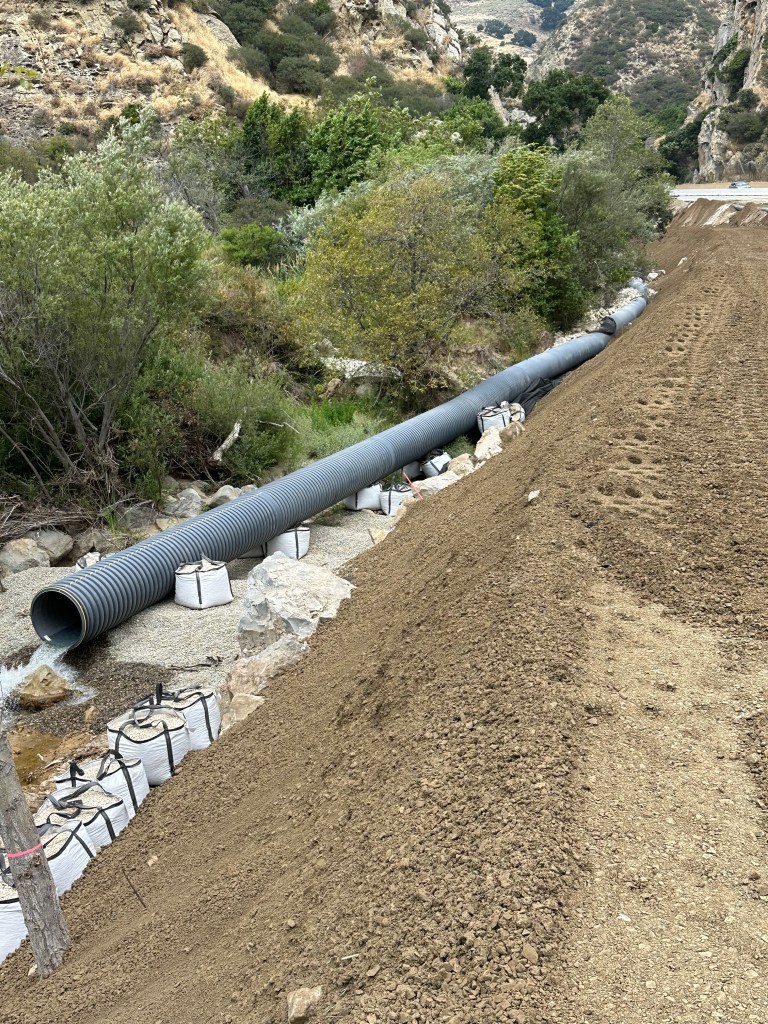Coastal Ranches Conservancy to Sue to Reclaim Gaviota Creek for Fish
Emergency Repairs from Winter Storms Ignored Steps to Protect Critical Habitat

Critical steelhead habitat in Gaviota Creek has come under scrutiny after emergency work this past winter destroyed the very section that Caltrans and the Coastal Ranches Conservancy had been working on over the past 10 years in planning to improve for fish passage. On August 31, Coastal Ranches sent a letter to Caltrans stating its intent to sue over the emergency repairs made in May.
The emergency began when rushing floodwaters in January 2023 ate away at the creek bank where it borders southbound Highway101 near the Gaviota Pass. The slope became steeper as the winter storms progressed, exposing a section in need of repairs for the last three years. To divert the water from the sidewall, Caltrans set a 1,000-foot-long, 36-inch-diameter pipe in the creek. It also left 25-30 feet of gravel and soil on the creek that hold the heavy machinery that is reinforcing the scoured bank.
Caltrans placed structures in the creek to avoid undermining the walls supporting the highway, but the emergency work bypassed the agreement to incorporate fish passage into the design, Doug Campbell stated in a letter to Fish & Wildlife. Coastal Ranches Conservancy argues that the current retaining wall project ignores California law that requires Caltrans not to maintain barriers to fish passage in road projects, and also ignores the Endangered Species Act requirement for an incidental take permit for a protected species such as steelhead.
As well, the emergency repair project report failed to list the specific area as a critical habitat, the nonprofit stated, and approval of the project by regulatory agencies was questionable. Once approved as an emergency, the project was able to bypass review pursuant to CEQA (California Environmental Quality Act), Fish & Game, and by the public.
The past work the two groups had agreed upon had relocated the steelhead to more habitable waters and removed small dams built in the creek in the 1950s that disturbed the fishes’ voyage upstream. In 2018, they moved a number of steelhead to deeper and cooler pools. These new pools were a “hotspot of habitat for the steelhead to survive,” said Doug Campbell, executive director of the Coastal Ranches Conservancy.
During the emergency work four or five years later, this pool was drained for the emergency repair project. Also, according to the Caltrans Emergency Project Species Relocation Summary, multiple deaths of juvenile steelheads and other aquatic animals occurred due to poor capture methods during the emergency work, ignoring methods successfully utilized in 2018. The conservancy believes it could take years to recover from the damage to the creek bed and steelhead passage.
For the conservancy, Campbell said they hope to win penalties for the damage done to Gaviota Creek and the steelhead population, which might prevent occurrences like this from happening again.
A Caltrans spokesperson said the agency would hold off commenting as the matter is headed for litigation.




You must be logged in to post a comment.